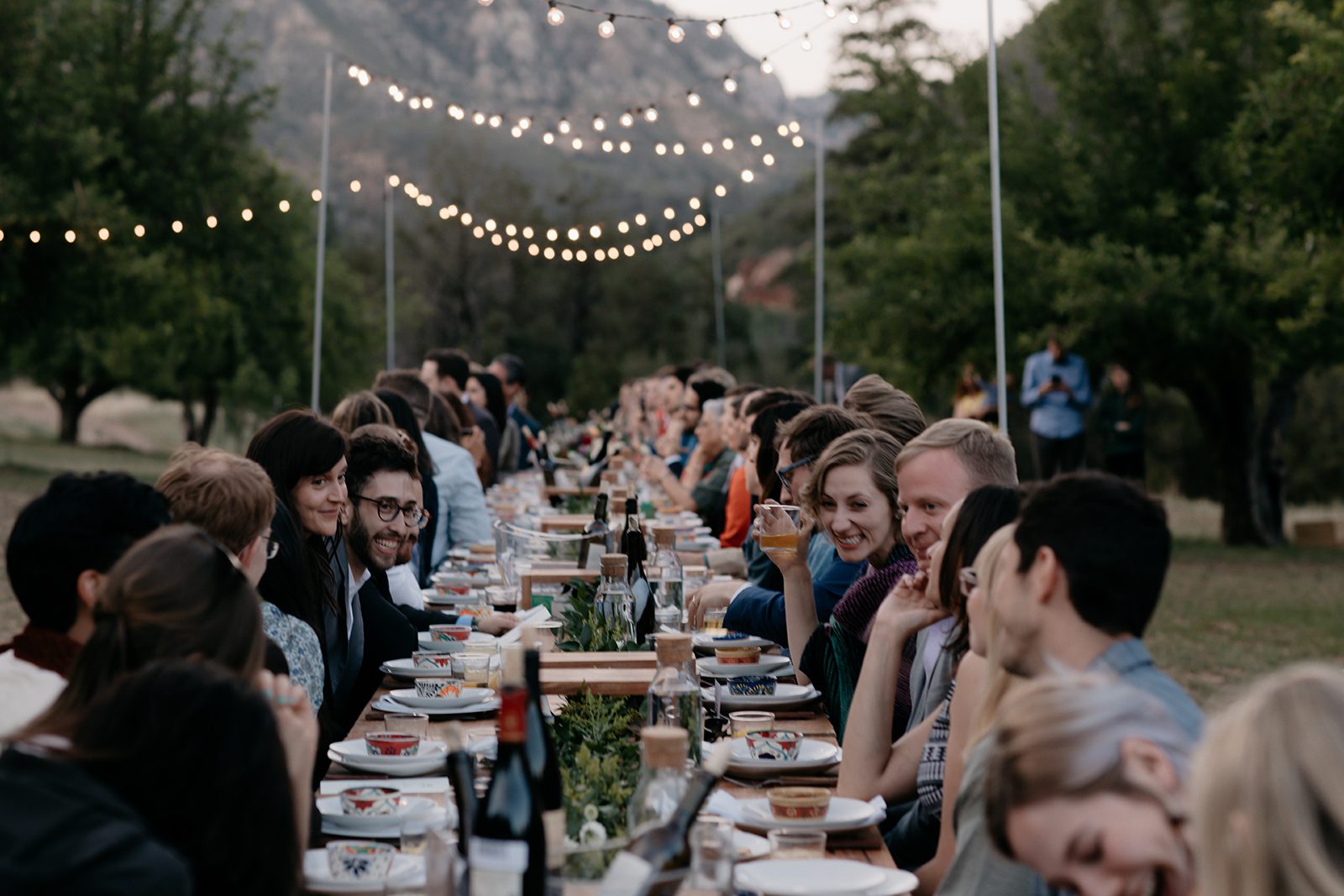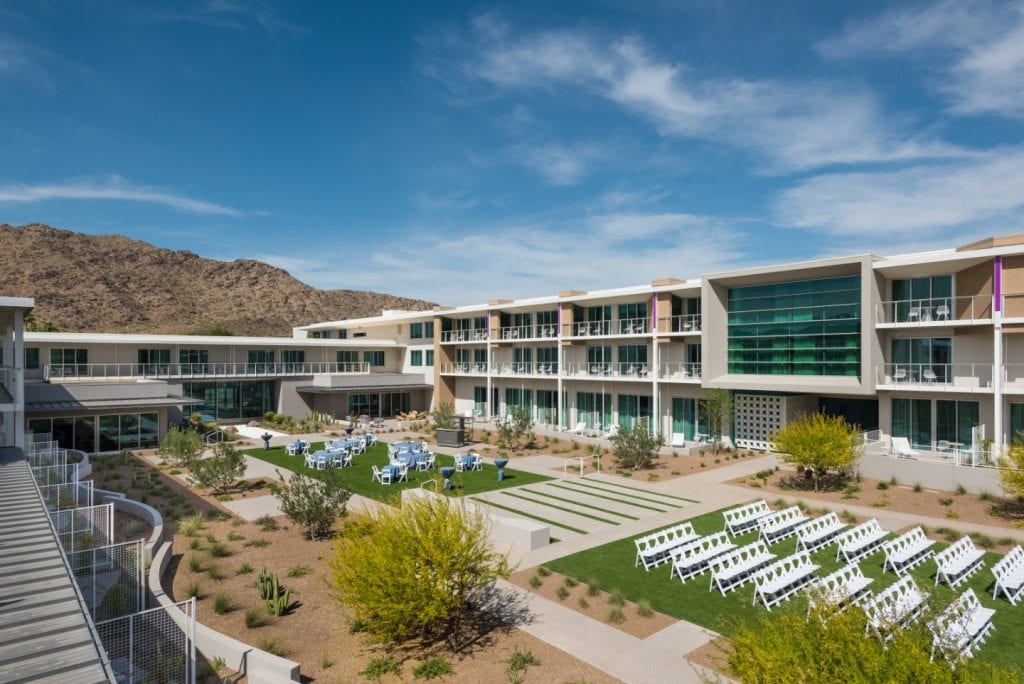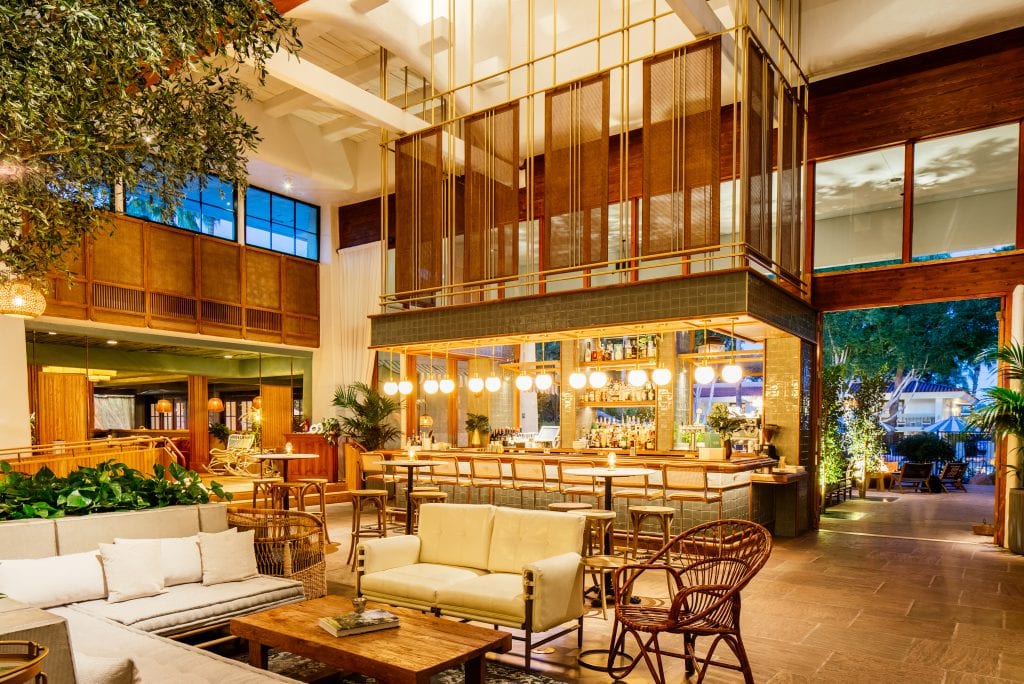Skift Take
Creative meeting planners are embracing the small-scale gathering, as attendees demand that events be more interesting, memorable, and worth their time. Destinations with unique hospitality options and easy access to nature are best poised to capitalize on this move to miniaturize meetings.
This sponsored content was created in collaboration with a Skift partner.
There’s no doubt the meetings and events sector is a massive global business, powering more than $381 billion in direct spending by more than 329 million attendees in North America in 2017, according to the Events Industry Council. That scale has prompted many meetings destinations to step up their investments in airports, hotels, and conference centers. In Arizona, for example, the Phoenix Convention Center now plays host to hundreds of thousands of attendees annually, after a massive $600 million expansion about a decade ago.
Yet on the other end of the market, meeting planners have recently demonstrated a growing interest in smaller gatherings, which can be more impactful and more cost effective. These smaller working sessions, team development gatherings, and events with fewer than 50 attendees — known to the industry as “simple meetings” — are increasingly in demand. Yet creativity in the space is still hard to come by, according to some planners.
“There’s this idea of what a networking event should be like. They want all the departments or divisions to ‘encounter’ each other and shake hands,” said Matt Cooley, co-founder of Cloth & Flame, an events company based in Phoenix. “It’s a good idea in theory, but it’s always a bunch of round tables that they bounce around in execution.”
The firm, which he and his wife, Olivia Laux, started in late 2016, specializes in staging corporate retreats, dinners, and weddings in truly off-the-grid places in all 50 states, though their focus is in and around Phoenix, where they have about 50 venues “in some of the most incredible landscapes on earth,” he said.
“We put people together outdoors, at one long table, and there’s just something about it that makes them feel available,” Cooley said. “I’ve heard people at corporate events share deeply personal stuff with colleagues — moments of vulnerability and openness. People are sharing themselves because they feel freer to do it.”
One of his favorite events was pulled off with a fleet of six helicopters, which departed from Phoenix. “We worked for six months to develop a relationship with the Hualapai Native American tribe, and we did a dinner where we flew a corporate group into the base of the Grand Canyon,” Cooley said, which was complete with custom tables, chairs, and even a portable restroom built on the canyon floor.
Why Small Meetings Make Sense
While the refreshed interest in smaller events seems to be driven by a focus on the experience, the trend is also supported by scientific research on the subject of innovation. One recent study “found that the smaller the research team working on a problem, the more likely it was to generate innovative solutions,” according to a summary of the findings in The New York Times. “People working in larger groups tend to generate fewer ideas than when they work in smaller groups, or when working alone, and become less receptive to ideas from outside,” the article continued.
That’s been a boon for places like Mountain Shadows, a resort property that opened in 2017. “We’re in an incredible resort location, but the design was very purposely done in the style of an urban, downtown, boutique hotel,” said Josh Gershweir, director of sales at Mountain Shadows. “When it comes to hosting corporate meetings, I want to capture that vibe.”
As a result, the 183-room hotel, which also has 42 “residences and suites,” does a brisk business in small meetings and events. As the name suggests, it’s located at the base of Phoenix Mountains Preserve and offers quick access to hikes up Camelback Mountain and Piestewa Peak, in addition to on-property golf, two pools, an on-site art gallery, and multiple bars and restaurants.
“For younger professionals, it’s culture rather than the paycheck that’s really driving them to want to be with certain companies. And events are great tone setters when it comes to corporate culture. The venue they choose needs to be an extension of them,” Gershweir said.
As part of that, he’s seen a surge in interest from car companies, fashion brands, and others that are seeking out not just a venue but a unique stage for small-group gatherings. “Often, it’s very purposeful that they’re here in Phoenix,” Gershweir said. “There’s something very recharging about the desert.”
What Planners Are Looking for in Smaller-Scale Events
Proximity to the outdoors is another key factor for planners. “Particularly for smaller groups, we see an increase in bookings at hotels located in places that offer easy access to nature, along with the peace and quiet not typically available at the larger, busier city properties,” said Anne Dimon, president of the Wellness Tourism Association, a member-based, not-for-profit organization.
And while “wellness is the latest hook in travel marketing,” as Skift has reported, nature and the outdoors are also key for attendees, said Jess Martin, marketing manager of Classic Hotels & Resorts, headquartered in Scottsdale.
“We’re right next to South Mountain Park and Preserve, which has more than 60 miles of trails,” she said of the group’s recently renovated Arizona Grand Resort & Spa. “Our resort’s experienced event professionals will help with guided group hikes and even arranging mountain biking excursions,” including some trails that leave right from the property.
The Arizona Grand also has the seven-acre Oasis Water Park on site. It’s a perk for family-friendly events, of course, but also a gathering place for evening functions, Martin said. “It’s really popular for dinners and receptions because it feels like an oceanside experience.”
The Grand’s sister property, The Scott, has more of “a Cuban feel,” Martin said, after a gut renovation completed in fall 2018. There’s a huge amount of outdoor space, where groups have hosted cigar-rolling demonstrations or live Cuban music concerts.
Bringing Smaller Events to a Booming Downtown
In the heart of the city, where huge investment is reshaping the neighborhood surrounding the convention center, there’s also a trend toward smaller-scale events and experiences.
Many are happening at Galvanize, a self-described “technology ecosystem,” that runs programming classes, offers co-working space, and hosts as many as 200 gatherings a month, said general manager Diana Vowels, who oversees the Warehouse District campus. The 2-year-old Phoenix location is one of nine Galvanize outposts across the United States.
“What makes Galvanize unique is that on our campuses, where we’re teaching [software engineering] programs, we also have hundreds of companies that work there. It offers a natural opportunity to mix and mingle over coffee. At our Phoenix campus, for example, we have more than 140 companies — both startups and larger companies,” she said, including Accenture, Banner Health, Google Cloud Arizona, Intel, and Zillow.
“When we first opened, people often times looked at us for pure tech events, like developers talking about Javascript,” Vowels said. “But in the last six to eight months, we’re seeing many more types of events outside of tech — in arts and culture, for example — because people want a unique venue.”
While event planners like Cooley, of Cloth & Flame, have made a name for themselves with off-the-grid experiences, they’re also game for activating spaces in the heart of Phoenix. Their second-annual Savor on Central dinner was held in April on one of the city’s major downtown thoroughfares, which was closed to traffic so that 150 guests could gather at a communal table set right around the corner from the Phoenix Convention Center.
Wherever the pop-up, he said, interesting things tend to happen when small groups gather and slow down. “When you’re out in the desert and you don’t have a cell signal anymore, and everything just kind of slows down a bit, you’re there for the people across from you,” Cooley said. “We thought that we were starting an experiential dining company, but we ended up creating a connection company.”
This content was created in collaboration with Visit Phoenix and published by Skift’s branded content studio, SkiftX.
Have a confidential tip for Skift? Get in touch
Tags: arizona, hotels, meetings and events, phoenix, resorts, urban planning, Visit Phoenix



